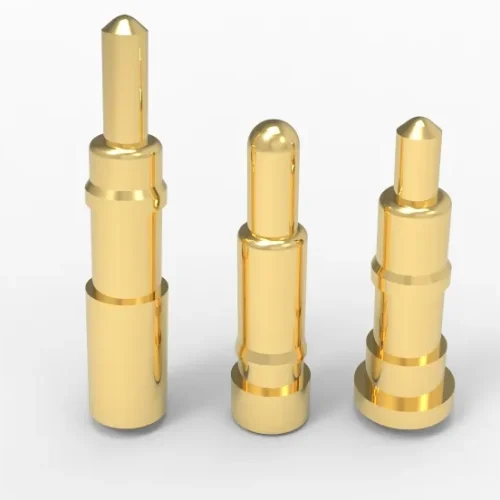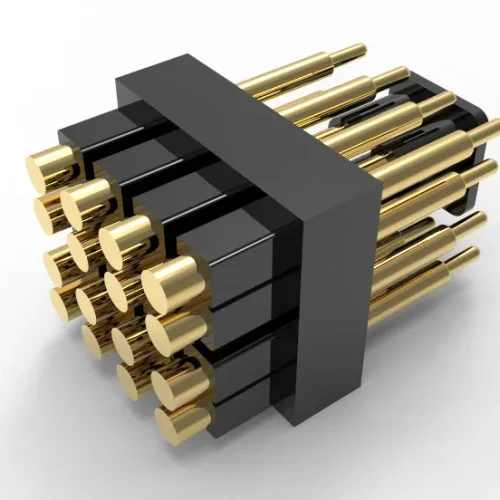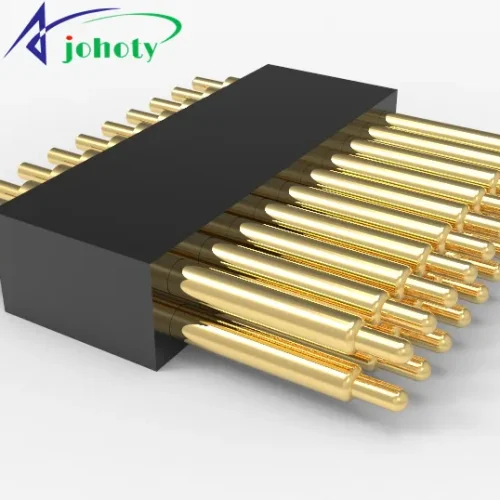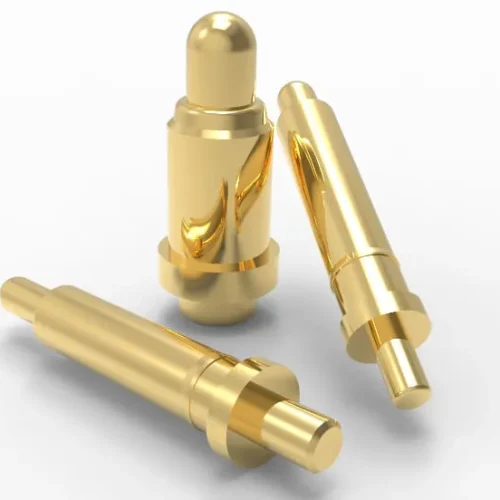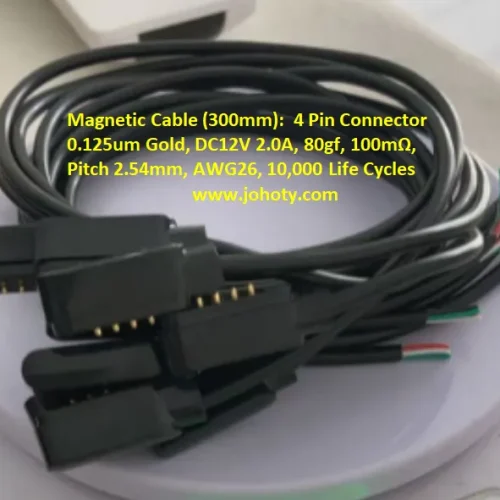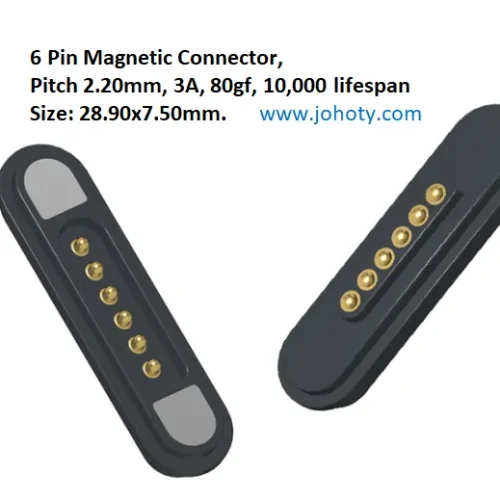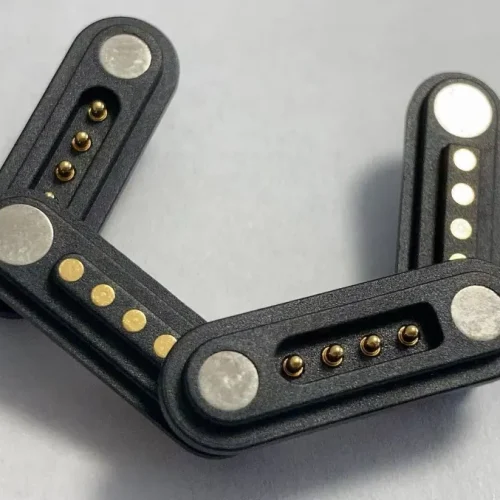Jewelry craftsmanship is another world altogether. The details that go into making the most minor pieces are immaculate. However, one such element often overlooked during the process is a lobster clasp—a tiny but crucial component when designing intricacies and joining these pieces together.
Therefore, today’s blog will focus on their construction, usability, and more. Moreover, this guide is ideal for someone who wants to explore the marriage of form and function.
Let’s go into the specifics, reveal the tricks, and learn how lobster clasps have evolved into a crucial component of the jewelry industry by skillfully fusing elegance and practicality.
Upgrade your jewelry game with Johoty’s lobster clasp collection today!
- Stamping Metal Clips + PVC, Safety Pin
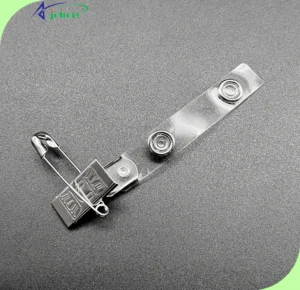
- Metal Clips, 5.00cm Stamping, SUS304
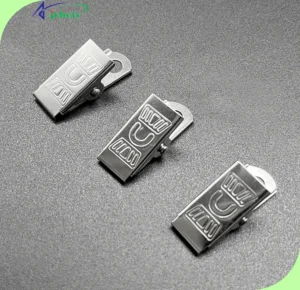
- Snap Hook, 1 inch
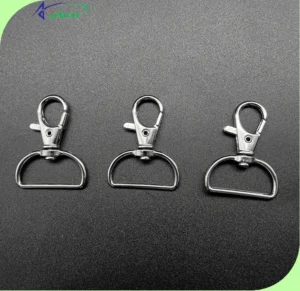
What Is A Lobster Clasp?
According to Wikipedia:
“A lobster clasp, you can also call it a lobster hook, lobster claw, trigger clasp, or bocklebee clasp, is a fastener that gets held closed by a spring. The lobster clasp gets opened or closed by holding a small lever, usually with a fingernail, long enough to apply, then it gets attached (or removed from) a short link-chain or a ring-like structure. The most common use of these clasps are for necklaces, bracelets, and keychains.”
Also, the lobster clasp is the most common type for jewelers, and for a good reason. They are reliable, durable, easy to use, and available in different designs and materials.
Because they combine usefulness and style, lobster clasps are a common choice. They are simple to use and offer a solid closing that reduces the possibility of jewelry sliding off. These clasps are available in various sizes, materials, and patterns.
Lobster clasps provide a flexible method for securing accessories and adding a touch of refinement to any outfit, from delicate chains to bulky bracelets.
What Is A Lobster Clasp Gets Made of?
Understanding a Lobster Clasp’s construction is essential to appreciate its advantages fully. We’ll discuss the clasp’s physical design and the magnet test, assay, and potential effects of plating on your clasp.
Construction:
Lobster clasps \of a steel spring, like our other preferred clasp, the spring ring. The three components of the trigger, spring, and the body make them up.
Lobster clasps have a spring with a slightly different shape and only one coil instead of spring rings, which have the spring inserted into a tube.
Pulling the trigger forces the spring up against the clasp’s body. The trigger returns to its neutral position as soon as you release it. To learn more about spring rings
Clearing The Magnet Test:
The bodies and triggers of lobster clasps typically get constructed of metal, sterling silver, 14k gold, or gold-filled. The spring, however, always consists of steel construction. You can see that the spring comes from a deeper metallic material in the images of a disassembled lobster class up top.
It is because an expensive metal spring would quickly stop working after repeatedly losing its tensile strength. Steel springs retain this crucial “springy” tensile strength quality throughout their lifespan of usage.
Regardless of what outer protecting layer you use for your clasp, you will feel the magnetic pull if the inside metal is strong.
Assay:
The assay of the item will change if a clasp contains steel. Describe assay. It is a laboratory test that identifies the breakdown of the precious metals in your item to confirm its purity. For instance, sterling silver has 7.5% copper and 92.5% pure silver.
By including the steel spring, we have added weight and a new substance to the piece, lowering its purity. Silver and gold, however, don’t have the strength to function as springs, so steel spring is essential.
Be mindful of the effect on assay when utilizing your lobster clasp or any other clasp that consist of a steel spring, like a spring ring.
Always take out steel-containing clasps or let your lab technician know that your testing sample might contain clasp springs that must be removed before analysis if you conduct quality control lab tests on your goods.
Priming The Lobster Clasp:
There are many flash-plated lobster clasps. They get plated during the production process finishing stage to make them clean and bright.
Some clasps may also receive an anti-tarnish treatment and plating to delay tarnishing. The lobster clasp trigger may initially be sticky due to plating or anti-tarnish treatments. Your clasp will work well once you use it a few times to cut through the treatments.
How To Use A Lobster Clasp?
Here are three steps to use a lobster clasp:
- The latch portion of the clasps should be placed closest to the finger.
- Firmly press down on the latch.
- The latch will open the trap side so you can insert an attaching loop.
Steps for Attaching Tigertails on Lobster Clasps:
- To crimp a tiger’s tail, slide it in.
- The tiger tail should get threaded through the lobster clasp’s bottom loop.
- Rewind the tiger tail by passing the end through the same crimp you did before.
- Insert the crimp bead into the crimp pliers’ second crimp notch.
- Close the crimp bead entirely by applying pressure with the crimp pliers; the crimp should take the form of an indentation.
- On the first notch of the crimp pliers, set the indented crimp.
- Snap the pliers shut.
Every lobster clasp has a hoop on the bottom where different threads and metal fasteners can attach to secure jewelry. Unless otherwise specified, the bottom hoop of a lobster clasp is a standard technical component.
Conclusion:
Remember the meaning of the lobster clasp as you surround yourself with the finest jewelry. It is a potent link representing the delicate balance between usefulness and fashion.
Look no further than Johoty if you want to add pieces to your collection that reflect this delicate balance. The fantastic selection of lobster clasp products Johoty offers, with their dedication to quality and craftsmanship, promises to up your jewelry game.
FAQs
What is the difference between a lobster claw and a lobster clasp?
The lobster clasp, also known as a claw clasp, is widely used to secure necklaces and bracelets. Because it resembles a lobster claw, that’s where you get the name. This specific clasp is opened by a little lever that is sufficiently long to hold the piece on the closure and is held closed by a spring.
Is a spring ring or lobster clasp better?
Because they are sometimes the cheapest, spring rings are an excellent choice for a clasp. They are lighter and utilize less material than a lobster clasp since they are hollow. Because they also contain an innerspring. Although they are made differently
What is the size of a lobster clasp?
11mm lobster clasps are an excellent standard size. Depending on the construction, you can also select a smaller or larger lobster clasp to fit the overall appearance of your jewelry.



